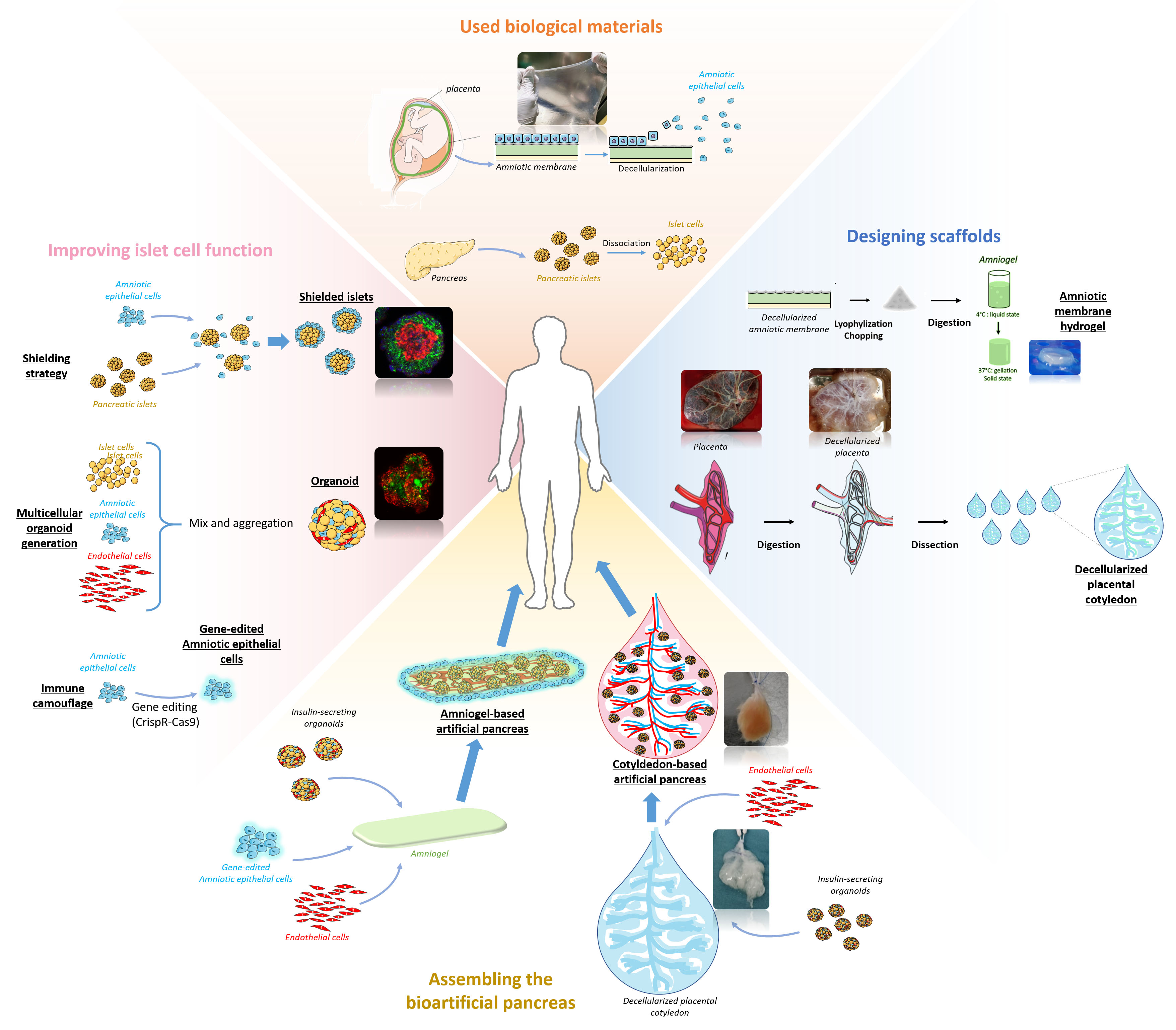[1021] Tissue Engineering and Organ Regeneration

Group studies are focused on development of novel cell-based therapies for type 1 diabetes, combining the principles of tissue bioengineering and surgical sciences to create bioartificial organs. We are interested in bioengineering multicellular islet organoids, biological scaffolds and hydrogels, as components of a matrix for cell and tissue growth. The ultimate aim is to engineer a bio artificial pancreas, with significant advantages in the engraftment, vascularization and viability of the graft.
New Generation Cell Therapy: Bioartificial Pancreas to Cure Type 1 Diabetes
The aim of this project is to generate a vascularized and immune-protected bioartificial pancreas that can be transplanted into non-immuno-suppressed patients; it combines advanced tissue engineering strategies, such as 3D organoid generation, hydrogel design, bioartificial organ assembly, and CRISPR-Cas9 gene editing.
If successful our approach will bridge the gap between current clinical islet transplantation and future regenerative medicine. The project has the potential to drastically improve the success rate of clinical beta-cell replacement therapies, with exceptional advantages in terms of efficacy and patient safety.
Bioengineering of a vascularized endocrine pancreas to cure type I diabetes
The aim of this project is to generate a vascularized bioartificial pancreas that can be transplanted into diabetic hosts to cure diabetes. Constructs will be built using novel approach that takes advantage of the biological properties of the human placenta and of cells that constitute the walls of blood vessels. First, we will generate 3D constructs by decellularization of subunits of the placenta called cotyledons. Next, we will seed these scaffolds with islets and endothelial cells and generate a vascularized artificial organ.
We hope to demonstrate that these constructs will reverse diabetes without being rejected, without or with minimal immunosuppression.
GMP production and banking of human amniotic epithelial cells
Cells isolated from different parts of placental tissues, including amnion, decidua, and umbilical cord have been studied for their multipotent differentiation capacities, but also importantly for their immunomodulatory and anti-inflammatory properties.
We are working on development of standard operating procedures of isolation characterization and banking of the amniotic epithelial cells and placental decidual cells according to GMP procedures.
